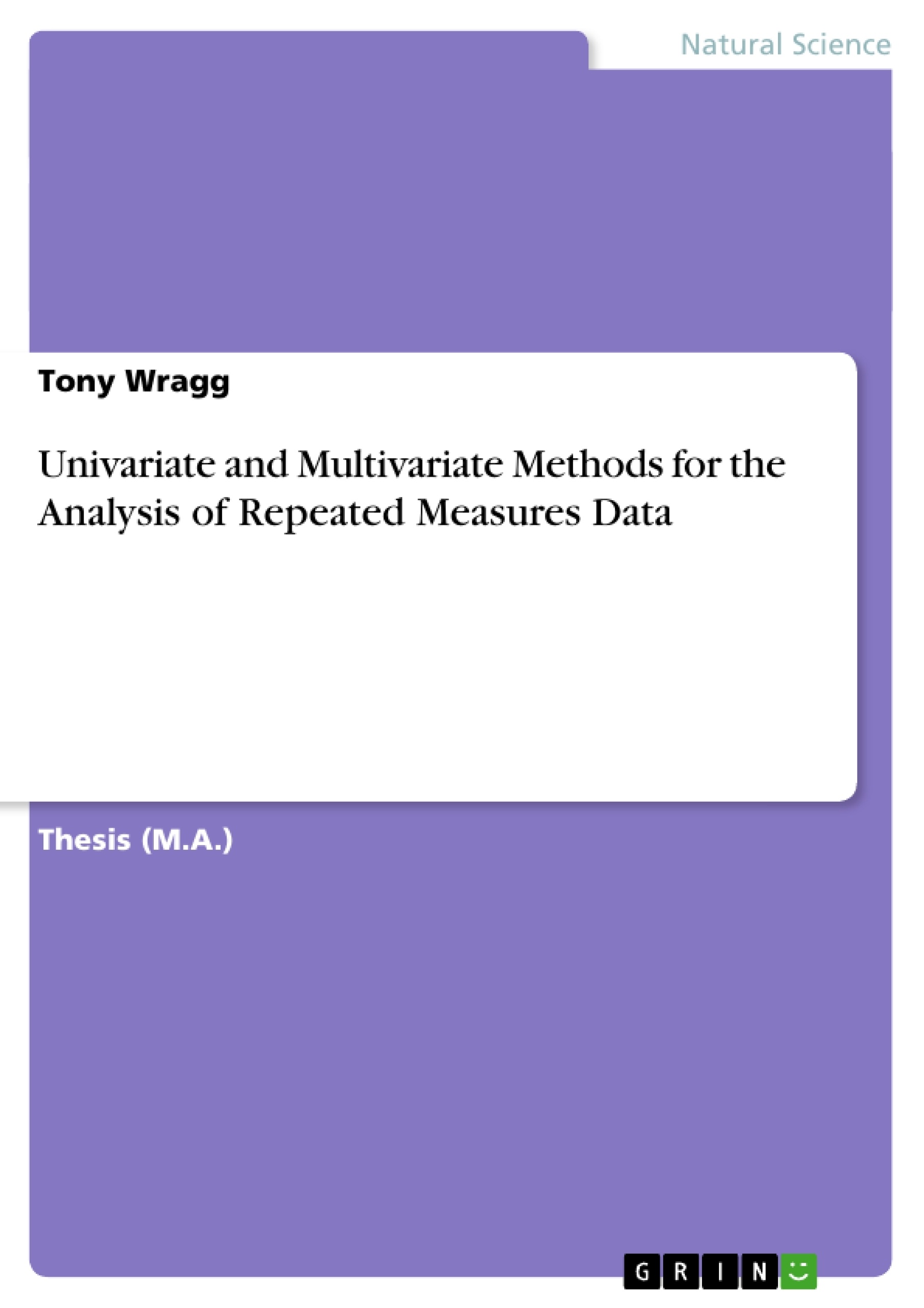This thesis considers both univariate and multivariate approaches to the analysis of a set of repeated-measures data. Since repeated measures on the same subject are correlated over time, the usual analysis of variance assumption of independence is often violated. The models in this thesis demonstrate different approaches to the analysis of repeated-measures data, and highlight their advantages and disadvantages.
Milk from two groups of lactating cows, one group vaccinated, the other not, was analysed every month after calving for eight months in order to measure the amount of bacteria in the milk. The primary goal of the experiment was to determine if a vaccine developed by the Royal Melbourne Institute of Technology’s Biology Department led to a significant decrease in mean bacteria production per litre of milk produced compared to the control group.
A univariate model suitable for repeated measures data was initially tried, with mean bacteria production in the treatment group not significantly different from the control group (p < 0.68).
The multivariate approach to repeated measures, profile analysis, yielded similar results for treatment effects (p < 0.68), while meeting the necessary assumptions for multivariate analysis.
Finally, a generalised multivariate analysis of variance was carried out in order to fit polynomial growth curves for both the control and the vaccinated groups and to test if the growth curves were equal for the two groups. It was found that a slope-intercept model was adequate to describe both growth curves and that the growth curve for the treatment group did not differ significantly from that of the control group (p < 0.11).
Table of Contents
- 1. INTRODUCTION
- 2. EXPLORING THE DATA
- 3. TIME BY TIME ANOVA
- 4. UNIVARIATE APPROACH TO REPEATED MEASURES
- 4.1 Repeated Measures ANOVA
- 4.2 Testing For Compound Symmetry
- 5. MULTIVARIATE APPROACH TO REPEATED MEASURES
- 5.1 Profile Analysis
- 5.2 Assumptions of Profile Analysis
- 5.3 Testing For Multivariate Normality
- 5.4 Testing For The Equality of Covariance Matrices
- 5.5 Hypothesis Tests for Profile Analysis
- 6. THE GENERALISED MULTIVARIATE ANALYSIS OF VARIANCE
- 6.1 Growth Curves
- 6.2 Hypothesis Tests For Growth Curves
- 6.3 Testing Polynomial Adequacy
- 6.4 Testing For The Equality of Growth Curves
- 7. CONCLUSION
- REFERENCES
- APPENDIX A
Objectives and Key Themes
This thesis explores both univariate and multivariate approaches to the analysis of repeated-measures data. The objective is to demonstrate various methods for analyzing data with correlated observations, highlighting the advantages and disadvantages of each approach. The text explores the issue of violating the independence assumption in traditional analysis of variance when dealing with repeated measures.- Univariate and Multivariate Approaches to Repeated Measures Analysis
- Violation of Independence Assumption in Repeated Measures
- Advantages and Disadvantages of Different Approaches
- Application of Methods to a Real-World Example (Milk Bacteria Study)
- Interpretation of Results and Statistical Significance
Chapter Summaries
The thesis begins with an introduction to the topic of repeated measures data and its significance. Chapter 2 delves into the exploration of the data, examining patterns and characteristics. Chapter 3 focuses on Time by Time ANOVA, a traditional approach to analyzing repeated measures data. Chapters 4 and 5 explore univariate and multivariate approaches respectively, including Repeated Measures ANOVA, Profile Analysis, and the assumptions associated with these methods. Chapter 6 delves into the generalized multivariate analysis of variance, exploring growth curves and hypothesis testing. The thesis concludes with a summary of findings and interpretations.
Keywords
This thesis focuses on the analysis of repeated measures data, exploring both univariate and multivariate methods. Key terms include repeated measures ANOVA, profile analysis, generalized multivariate analysis of variance, compound symmetry, multivariate normality, covariance matrices, growth curves, and statistical significance. The text also examines real-world applications through a case study involving milk bacteria production in vaccinated and non-vaccinated cows.- Quote paper
- Tony Wragg (Author), 1999, Univariate and Multivariate Methods for the Analysis of Repeated Measures Data, Munich, GRIN Verlag, https://www.grin.com/document/110642




